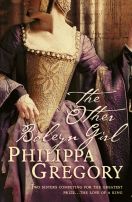PROJECT BRIEF - RESEARCH PRESENTATION 3 - DISCUSSION AND EVALUATION
The final presentation guidelines for RESEARCH PRESENTATION 3 are taken from:
Cottrell, S. (2008) The study skills handbook. 3rd edn. Basingstoke: Palgrave Macmillan, p.107.
Cottrell, S. (2008) The study skills handbook. 3rd edn. Basingstoke: Palgrave Macmillan, p.107.
33333333333333333333
1. WHAT? (tell us about about your main points of discussion identified in your CRITICAL RESEARCH REPORT and self-reflect and evaluate on your research and writing process...)
- RESEARCH PRESENTATION 3 - DISCUSSION AND EVALUATION is an illustrated verbal presentation of work achieved for the CRITICAL RESEARCH REPORT.
- This presentation should summarise the focus of the discussion in the CRITICAL RESEARCH REPORT.
- This presentation should include self-reflection and evaluation of both the working process and work achieved.
See
PROJECT BRIEF - CRITICAL RESEARCH REPORT
PROJECT BRIEF - REFLECTIVE JOURNAL
for more information...
The presentation should include
- in-text citations and quotations from your secondary research
- examples from your REFLECTIVE JOURNAL
- REFERENCE LIST (Harvard) for in-text citations and quotations (it does not need to include your full BIBLIOGRAPHY of research)
What is the difference between a reference list and a bibliography?
See the REFERENCING pages plus referencing software
https://www.mendeley.com
http://www.neilstoolbox.com/bibliography-creator/
(student recommended) for more information...
https://www.mendeley.com
http://www.neilstoolbox.com/bibliography-creator/
(student recommended) for more information...
The presentation should last 10-15 minutes with 1 slide every 2-3 minutes = 6-8 slides (not including REFERENCES).
The presentation should follow this structure
- The DISCUSSION should include the main points of interest (including quotes) identified in the CRITICAL RESEARCH REPORT.
- The SELF-REFLECTION AND EVALUATION should include main points of personal learning in terms of research and writing (including examples from your REFLECTIVE JOURNAL).
MATHS ALERT ... SET THEORY!
Set theory as grouping
Definition
What is a set? Well, simply put, it's a collection.
First we specify a common property among "things" ... and then we gather up all the "things" that have this common property.
For example, the items you wear: shoes, socks, hat, shirt, pants, and so on.
I'm sure you could come up with at least a hundred.
This is known as a set.
Or another example is types of fingers.
This set includes index, middle, ring, and pinky.
So it is just things grouped together with a certain property in common.
Notation
There is a fairly simple notation for sets. We simply list each element (or "member") separated by a comma, and then put some curly brackets around the whole thing:
{3,6,91}
The curly brackets { } are sometimes called "set brackets" or "braces".
This is the notation for the two previous examples:
{socks, shoes, watches, shirts, ...}
{index, middle, ring, pinky}
Notice how the first example has the "..." (three dots together).
The three dots ... are called an ellipsis, and mean "continue on".
So that means the first example continues on ... for infinity.
(OK, there isn't really an infinite amount of things you could wear, but I'm not entirely sure about that! After an hour of thinking of different things, I'm still not sure. So let's just say it is infinite for this example.)
So:
The first set {socks, shoes, watches, shirts, ...} we call an infinite set,
the second set {index, middle, ring, pinky} we call a finite set.
But sometimes the "..." can be used in the middle to save writing long lists:
Example: the set of letters:
{a, b, c, ..., x, y, z}
In this case it is a finite set (there are only 26 letters, right?)
Numerical Sets
So what does this have to do with mathematics? When we define a set, all we have to specify is a common characteristic. Who says we can't do so with numbers?
Set of even numbers: {..., -4, -2, 0, 2, 4, ...}
Set of odd numbers: {..., -3, -1, 1, 3, ...}
Set of prime numbers: {2, 3, 5, 7, 11, 13, 17, ...}
Positive multiples of 3 that are less than 10: {3, 6, 9}
And the list goes on. We can come up with all different types of sets.
There can also be sets of numbers that have no common property, they are just defined that way. For example:
{2, 3, 6, 828, 3839, 8827}
{4, 5, 6, 10, 21}
{2, 949, 48282, 42882959, 119484203}
Are all sets that I just randomly banged on my keyboard to produce.
Why are Sets Important?
Sets are the fundamental property of mathematics. Now as a word of warning, sets, by themselves, seem pretty pointless. But it's only when we apply sets in different situations do they become the powerful building block of mathematics that they are. ...
Operations
Now that we have elements of sets it is nice to do things with them. Specifically, we wish to combine them in some way. This is what an operation is used for.
An operation takes elements of a set, combines them in some way,
and produces another element...
An operation combines members of a set. (Maths is Fun, 2016).
MATHS ALERT OVER
2. HOW? (structure and presentation... )
RESEARCH PRESENTATION 3 should follow this structure
- The DISCUSSION should include the main points of interest in your research subject. It should demonstrate critical awareness of key ideas with in-text citations and quotations.
Susan Bordo's critical awareness of key ideas regarding Philippa Gregory
'The Other Boleyn Girl' Fact-Checker
Concocted Fictions:
Anne deliberately 'steals' Henry from Mary (Henry's affair with Mary was over before he began to pursue Anne).
Anne forces Mary to give up her son to be raised at court.
Anne says she wants Wolsey dead.
Anne behaves viciously to her sister on many occasions.
Anne induces a miscarriage (third pregnancy) when she thinks the fetus is dead.
Anne has sex with her brother in order to conceive a child...
Of course, if my book has demonstrated anything at all, it's that neither 'The Tudors' not 'The Other Boleyn Girl' has a monopoly on the creative uses of a history that, after all has some very large holes in the record. (Bordo, 2015, p.224).
See also other creative uses of ... history
Drunk History
http://www.mtv.co.uk/geordie-shore/videos/drunk-history-geordie-shore-holly-clip-2
Drunk History
http://www.mtv.co.uk/geordie-shore/videos/drunk-history-geordie-shore-holly-clip-2
The past may be another country, but that doesn’t mean it must be reserved for sober and sensible academics. After all, there are sober, sensible historians who have talked as much nonsense as any drunk and more: Holocaust-deniers, for a start. And why should history be the preserve of those who sit quietly in front of large books with small print? There’s room for the garrulous enthusiast as well as the expert to share their versions of well-known history on television. In the words of Max Beerbohm: “History,” it has been said, “does not repeat itself. The historians repeat one another.” Just like drunks, as it happens. (Haynes, 2016).
- The EVALUATION should reflect on your work for the CRITICAL RESEARCH REPORT. This can include both working process and work achieved and should make connections between academic research and studio practice. It should refer to your REFLECTIVE JOURNAL.
Susan Bordo's reflection on being a teenager
My own personal rebellion was to drop out of school, have a a lot of mindless sex, marry someone I didn't love, and then suffer a nervous breakdown that made me unable to leave him. (Bordo, 2015, p.190).
- Include a REFERENCE LIST at the end. This is not included in the slide count.
RESEARCH PRESENTATION 3 should follow these final presentation guidelines
- PowerPoint (or equivalent) - 6-8 slides (not including the REFERENCE LIST)
- Large text: at least 32 point
- Avoid flashy graphics and animation - unless it is really particularly effective or relevant
- Print up the PowerPoint to assist your presentation
3. WHY? (learning outcomes...)
The learning outcomes which are important for the assessment of RESEARCH PRESENTATION 3 are in bold underlined
- To self-manage ongoing independent academic research on subjects of personal interest within fashion and textiles.
- To show understanding of the relationship between academic research and studio practice.
- To show knowledge of the historical, technical and social development of post-industrial fashion and textiles.
- To show awareness of theoretical issues within fashion and textiles.
- To present research (secondary and original) in an academic form (written and verbal) conforming to academic conventions (Harvard reference system).
- To show analysis and evaluation of research.
4. WHEN? (hand in ... )
March 2017
March 2017
- The RESEARCH FILE and REFLECTIVE JOURNAL should be submitted at the time of the presentation
5. ASSESSMENT
RESEARCH PRESENTATION 3 - DISCUSSION AND EVALUATION will be assessed on
- SELF-MANAGEMENT - personal organisation
- RELATIONSHIP BETWEEN ACADEMIC RESEARCH AND STUDIO PRACTICE - content and/or working process
- ANALYSIS and EVALUATION - comprehension and critical awareness of key ideas
- REFERENCING AND PRESENTATION - Harvard referencing and final presentation
REFERENCES
Bordo, S. (2015 (2014) ) The creation of Anne Boleyn - In search of the Tudors' most notorious queen. London: Oneworld.
Haynes, N, (2016) 'History makes more sense when you're drunk', The Guardian 23 February [Online]. Available at: http://www.theguardian.com/commentisfree/2016/feb/23/drunk-history-tv-alcohol (Accessed 25 February 2016).
Maths is Fun (2014) 'Introduction to Sets'. Available at:http://www.mathsisfun.com/sets/sets-introduction.html (Accessed 31 January 2016).
Bordo, S. (2015 (2014) ) The creation of Anne Boleyn - In search of the Tudors' most notorious queen. London: Oneworld.
Haynes, N, (2016) 'History makes more sense when you're drunk', The Guardian 23 February [Online]. Available at: http://www.theguardian.com/commentisfree/2016/feb/23/drunk-history-tv-alcohol (Accessed 25 February 2016).
Maths is Fun (2014) 'Introduction to Sets'. Available at:http://www.mathsisfun.com/sets/sets-introduction.html (Accessed 31 January 2016).




